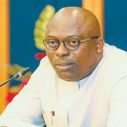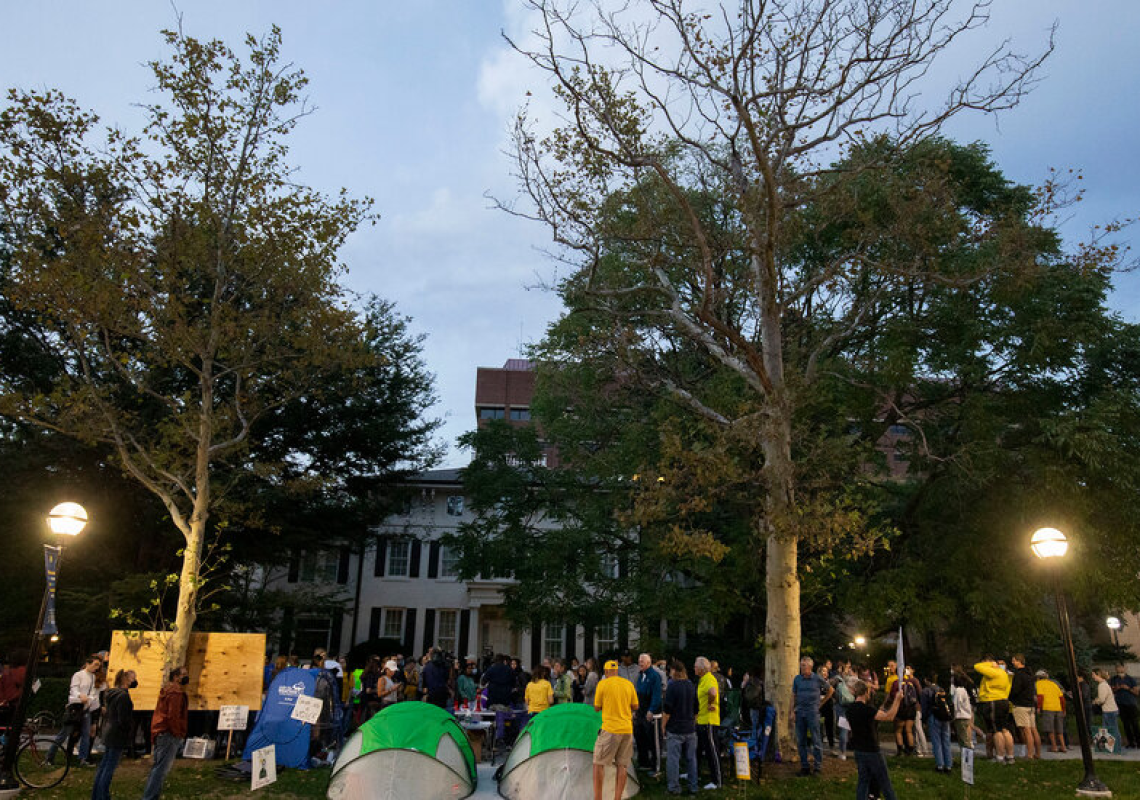Advertisement
Supported by
The accord is among the largest ever agreed to by an American university to compensate victims of sexual abuse.
Send any friend a story
As a subscriber, you have 10 gift articles to give each month. Anyone can read what you share.
By Alan Blinder
The University of Michigan said Wednesday that it would pay $490 million to more than a thousand people who had accused a doctor who worked with football players and other students of sexual abuse.
The agreement, among the largest by an American university to settle allegations of sexual abuse, was hammered out in private talks that concluded this week, more than three years after a former student wrote to Michigan’s athletic director and reported misconduct from the 1970s.
That former student, and, eventually, scores of others, said Robert E. Anderson had molested them during physical examinations, many of which were required to participate in athletic programs at Michigan. In some instances, investigators concluded, Anderson performed examinations that were unnecessary and improper; he insisted, for instance, on a pelvic exam for a woman who had complained of a sore throat.
Last June, a son of Bo Schembechler, the football coach who died in 2006 and retains mythic status on the campus in Ann Arbor, said he, too, had been one of Anderson’s victims.
“The University of Michigan has accepted responsibility financially and otherwise for harm that was caused by Anderson to so many young people that could have been avoided,” Jamie White, a lawyer for many of Anderson’s victims, said in a statement. “The university should be commended and not condemned.”
He added: “Most of our clients had a strong love for the university and did not want to see permanent damage, but wanted accountability.”
Michigan said in February 2020 that it was investigating whether Anderson had abused students and asked people who believed they had been victimized to come forward. By then, the authorities had been conducting an inquiry in secret for more than a year, after a former student sent a letter to Michigan’s athletic director and accused Anderson of wrongdoing.
Michigan’s plea for information led to more than 100 reports across two weeks. Last May, a law firm hired by the university concluded that Anderson, who died in 2008 and was never prosecuted for any abuse, had “engaged in sexual misconduct with patients on countless occasions.”
At least some university officials knew of concerns about Anderson as his career unfolded; one told investigators that he went so far as to fire the doctor. (Months after Anderson’s purported dismissal, investigators noted, that same university leader approved a pay increase for Anderson.)
The son of Schembechler who said he was abused by the doctor said the coach ignored his account of it in 1969; his assertions could not be independently corroborated.
Anderson retired in 2003. In recent years, though, his former patients have described decades of lingering trauma, from a reluctance to seek intrusive medical examinations to persistent feelings of shame.
The accusations against Anderson — and Michigan’s knowledge of, and responsibility for, his misconduct — led to a wave of litigation against the university and, after months of negotiations, Wednesday’s announcement.
In the last decade, universities have agreed to pay enormous sums to settle abuse cases. In 2013, Penn State University said it would pay nearly $60 million to more than two dozen victims of Jerry Sandusky, a longtime assistant football coach. Michigan State University reached a $500 million settlement in 2018 to compensate victims of Lawrence G. Nassar, a doctor. Ohio State University has agreed to pay more than $46 million to people who said that Richard H. Strauss, a longtime team doctor, abused them.
And the University of Southern California pledged more than $1.1 billion in connection with misconduct by a gynecologist, George Tyndall.
Michigan’s disclosure of the settlement in the Anderson matter came less than a week after the board of regents ousted the university president, Mark S. Schlissel, for a relationship with a subordinate that it said occurred “in a manner inconsistent with the dignity and reputation of the university.”
2013: Penn State University. The university agreed to pay nearly $60 million to 26 sexual abuse victims of the former assistant football coach Jerry Sandusky, who was convicted in 2012 of abusing young boys in a scandal that shook the world of college football.
2018: Michigan State University. Victims of Lawrence G. Nassar, a former school physician and team doctor for U.S.A. Gymnatics who sexually abused athletes both from the school and outside it, reached a $500 million settlement with the university. Nassar was sentenced to what amounted to life in prison.
2020: Ohio State University. The university agreed to pay $41 million (which has grown to more than $46 million) to resolve some of the lawsuits stemming from several hundred claims of sexual assaults committed by Richard H. Strauss during his nearly 20 years as a doctor in the school’s athletic department.
2021: University of Southern California. A $1.1 billion settlement with the former patients of George Tyndall, a campus gynecologist who was accused of preying on hundreds of patients, set a record for collegiate sex abuse payouts.
2022: University of Michigan. The university reached a $490 million settlement with more than 1,000 people who had accused Robert E. Anderson, a doctor who worked with football players and other students, of decades of sexual abuse.
The regents are among those who must still approve the settlement, the university said, which covers about 1,050 claimants and was reached during mediation.
In a statement on Wednesday, Jordan Acker, the board’s chairman, said Michigan officials “hope this settlement will begin the healing process for survivors.”
The university faced rising pressure to reckon fully with its history. A former Michigan running back, Jon Vaughn, began camping outside the university president’s residence in October, and there were rumblings around the State Capitol of legislation that could have left Michigan more vulnerable in the courts.
Michigan said on Wednesday that $460 million of the settlement would be available to the people who had already brought claims and that the university’s lawyers would not take charge of distributing the money. Instead, a retired federal judge is expected to oversee the payments to the victims.
A spokesman for the university did not respond to an inquiry on Wednesday about how Michigan would pay for the settlement.
White said in an interview on Wednesday that he had briefed his clients on the settlement talks during a video call this week. They were, he suggested, broadly supportive of reaching a deal.
“There certainly is a desire to have it over with,” said White, who added, “Dragging this out for another three years in litigation was not in anybody’s best interest.”
The remaining $30 million of the settlement will be reserved for people who might bring claims against Anderson by July 31, 2023.
“This is one piece of the puzzle that allows them to have some healing and some closure,” said Michael L. Wright, another lawyer for Anderson’s victims. “I don’t think that this financial settlement will provide them everything in terms of closure, but I think it goes a long way to let them know that Michigan accepted responsibility, that Michigan knew they failed these athletes and students and they are trying to help them through this process.”
Advertisement






